KEY PLOT POINTS
Based only on what I have seen in the trailers and the cast list (found on imdb) it appears that there will be a few key focuses of the movie.- Jackie's life leading up to his signing with the Dodgers organization, his relationship with his wife Rachel, his relationship with Clyde Sukeforth (the scout who brought Jackie to Brooklyn) and his relationship with Branch Rickey (the Dodgers owner who decided to break the color barrier).
- His 1946 season with the Dodgers farm team in Montreal, his relationship with his first manager, Clay Hopper, his acceptance by the Canadian fans and his fight to deal with the resistance of the white players and fans in the minor league.
- A petition circulated by many of the Southern players (and some non southerners) on the Dodgers 1947 team asking Branch Rickey not to bring Jackie to the majors. The petition, started by Outfielder Dixie Walker and signed by most of the southern players, as well as a few northerners, has become a controversy in the study of Jackie Robinson. The petition has never been seen and some of the players accused of signing it say it never existed and several who claim it did exist say they never signed it. In this storyline look for Pee Wee Reese and Pete Reiser, the two Dodgers stars, to refuse to sign it.
- The Dodgers first game of the 1947 season against the Boston Braves.
- The Dodgers first and second series against the St. Louis Cardinals where Enos Slaughter spiked Jackie, Joe Garagiola argued with Jackie and Stan Musial calmed Jackie down.
- The Dodgers first series in Philadelphia where the Phillies, led by manager Ben Chapman, brutally taunted Jackie. This was one of the first times that the team rallied in his support. The reaction of the Dodgers and several others nearly cost Chapman his job.
- The Dodgers series against the Pirates where Fritz Ostermuller threw at Jackie's head, Hank Greenberg showed strong support for Jackie and Kirby Higbe threw at Pee Wee Reese's head.
- The eventual acceptance and support of Jackie's teammates and Jackie's success in the league.
CHARACTERS
Following is a list of characters you will see in the move broken into five categories: 1. Jackie and his family, 2. Dodgers Management and Personnel, 3. Dodgers Players, 4. Other league players and personnel and 5. Individuals not listed but likely to appear in the film:JACKIE AND HIS FAMILY
Jackie Robinson:
Obviously Jackie Robinson is the focal point of the movie and one of the most recognizable players in the history of the game. There will be many posts of Jackie to come (and some that have already mentioned him) but there are a few key life points that will obviously be important to know. Jackie was born January 31, 1919 in Cairo, GA. His mother moved the family when Jackie was very young to live with her brother and his family in Pasadena, CA. Jackie originally attended Pasadena Community College then went on to become a lettered athlete in baseball, basketball, track and All-American football star at UCLA and was the first student at the school to letter in four sports in the same year. Jack left UCLA just before graduation and was hoping to work towards being an Athletic Director. He went on to play professional football (not in the NFL) and ended up playing in Hawaii. As he was returning from Hawaii after the season the Japanese bombed Pearl Harbor. Jack enlisted in the army and was in an officer training program. While in the service he got into an argument with a white officer and was court martialed on exaggerated charges. He was discharged, returned to the states and was offered a job playing in the negro leagues. He was the Shortstop for the 1945 Kansas City Monarchs when he was approached by Clyde Sukeforth.
Rachel (Isum) Robinson:
Rachel Isum met Jackie Robinson when they were both students at UCLA. Rachel was studying nursing and later went on to get a PhD in nursing becoming very successful and celebrated in the field. Rachel and Jackie married and had a very successful marriage full of mutual love and support. They had three children and without Rachel's support Jackie never would have succeeded in 1947. The two were truly a team. This is a perfect example of the saying that "behind every successful man is a successful woman". Since Jackie's death in October 1972 Rachel has done a great job of preserving the legacy of Jackie Robinson and is often seen at events honoring his memory.
Mallie Robinson:
Mallie McGriff Robinson was one of 14 children born to Wash and Edna McGriff, slaves in the Cairo, GA area. She married Jerry Robinson and had five children, Jackie being the youngest, and they worked as sharecroppers in Georgia. Eventually Jerry left the family and Mallie could not afford to pay the rent on the land. She packed up her five children and moved to live with her brother's family in Pasadena, CA. She worked hard to support the five children and as they got older they helped support Mallie. Her son Mack was an Olympic Athlete who finished second to Jesse Owens in the 1936 Berlin Olympics.
DODGERS MANAGEMENT/PERSONNEL
Branch Rickey:
Branch Rickey was one of the most successful executives in baseball when he signed Jackie to a professional contract. A deeply religious man he refused to work on Sunday, even when he was a Catcher for the Yankees and later manager of the Cardinals. Rickey often told a story of his time as the coach at Ohio Wesleyan University. When the team tried to check into a hotel before a road game at Notre Dame, Rickey was told the team would not be accepted if they planned to check in with Charles Thomas, their African American Catcher. Rickey was able to convince the hotel to allow them to stay as long as Thomas did not sign the register and Thomas was only given a cot in Rickey's room, not an actual bed. When Rickey got to his room Thomas was sitting on the edge of the cot, crying and scratching at his hands. Rickey stopped and watched not knowing what to do. Thomas just said "It's my skin. If I could just tear it off I would be like everyone else." Rickey went on to become an executive with the St. Louis Browns and St.Louis Cardinals, introducing the famous Cardinals logo of two birds perched on a baseball bat. He revolutionized the sport by developing the first farm system of teams but he kept the terrible memory of Charles Thomas in his mind the rest of his life. After Happy Chandler, the new commissioner, made a statement known as the "four freedoms"statement, the door was open for Rickey to break the color barrier.
Clyde Sukeforth:
Clyde Sukeforth was sent by Branch Rickey to scout Jackie and was told he was scouting players for the Brooklyn Dodgers negro league team. Sukeforth reported back to Rickey, brought Jackie in for the first ever meeting and was a longtime supporter of Jackie. Frequent readers of the blog will remember that Clyde was featured in the series of articles focusing on players you may not know but should.
Clay Hopper:
Clay Hopper was a Southerner managing the Brooklyn Dodgers' farm team, the Montreal Royals, when Branch Rickey assigned Jackie to play for the Royals. Hopper was appalled that he would be the first white manager to manage an African American player and begged Rickey to assign Jackie to another team because he was terrified of what his neighbors would do. While watching Jackie in practice before the season Rickey turned to Hopper and said "Can you believe the play that man just made?" The response summed up Hopper's beliefs. He asked Rickey "Mr. Rickey, do you really think a n*****'s a human being?" Hopper did his best to adapt to the situation ( if he didn't he would be out of a job) and to adapt to the changing world. As the Dodgers continued to sign players to follow Jackie's success Hopper continued to manage Montreal. Joe Black, Roy Campanella and Don Newcombe all played under Hopper and although his racial views may or may not have changed, Campanella said he never had any negative experiences with Hopper.
Larraine Day:
Larraine Day was a famous actress best known for staring in the Dr. Kildare movie series along with Lew Ayres (husband of Ginger Rogers). Day herself was married to actor Ray Hendricks, although she was carrying on an affair with Leo Durocher, the Dodgers manager. Day and Hendricks sued each other for divorce on the grounds of infidelity and the scandal led to long time Dodger supporters, such as the Catholic Youth Organization, boycotting the team. Already in hot water for his other issues, the Dodgers ordered Durocher and Day to end the relationship. They refused, remained together and even married. When Durocher moved to the Giants, Day was given a pregame radio program called "Day with the Giants".
Leo Durocher:
Durocher is famous for many things but the most famous was the statement he probably never made: "Nice guys finish last." He was originally signed by the Yankees but was released when Babe Ruth accused him of trying to steal his watch. Durocher was part of Rickey's "Gashouse Gang" 1934 Cardinals and was a fierce competitor who was always ready for a fight. Before the 7th game of the 1934 World Series the legendary Frankie Frisch asked Durocher to play a little closer to second because Frisch was concerned he was too exhausted to play with his normal range. He told Frisch, who was also his manager, "Go get yourself a wheelchair if you can't cover your territory. I'm not making myself look bad to make you look good." Durocher's controversy didn't begin or end with the Larraine Day scandal. His battles with Lee MacPhail were legendary. Durocher was also known to associate with George Raft, a Hollywood actor and close friend of mobster Bugsy Siegel. Happy Chandler demanded that Durocher cut ties with the mobsters (and Raft) or he would be disciplined. When Durocher taunted MacPhail for having gamblers in his owner's box during a spring training game, MacPhail complained to Chandler and an investigation began. While the investigation went on Jackie was in Spring Training fighting to be promoted from Montreal. When Durocher found out about the petition signed by the southern players he called a team meeting. He made it clear that the players better fall in line or deal with him. He yelled at the team "I don't care if he's yellow or black or has stripes like a god damn zebra. I'm the manager of this team and I say he plays." The day before Opening Day 1947 Durocher was suspended for his gambling connections. He was replaced by Burt Shotton for the 1947 season but was back on the bench for 1948. Durocher and Robinson did not get along. When Jackie struggled at the start of the new year Durocher seemed to take it personally. Durocher treated Jackie like he did his other players (with a lot of yelling) but Jackie did not respond well and the relationship soured. Durocher was fired half way through the 1948 season and was immediately signed by the rival Giants igniting one of the most vicious periods of the rivalry.
Burt Shotton:
Burt Shotton was forced into a tough situation. The Dodgers had tied for first place in 1946 and were expected to challenge for the pennant in 1947. The season started with the player revolt and the Durocher suspension followed very quickly after. Rickey originally wanted Joe McCarthy, former Yankees manager, to take over but McCarthy refused. Clyde Sukeforth was given a temporary job but convinced Rickey that Burt Shotton was the man for the job. Shotton was known for wearing regular clothes in the dugout and not the usual full uniform. When Durocher was let go half way through the 1948 season Shotton was brought back and managed through the end of the 1950 season. When Cal Abrams was thrown out at the plate by Richie Ashburn to clinch a Phillies win over the Dodgers on the last day of the 1950 season Shotton was let go.
Harold Parrott
Harold Parrott was the Dodgers traveling secretary given the impossible task of coordinating the Dodgers travel plans for the 1947 season. Parrott played a big part in keeping the balance on the team. When the players signed the petition to ask Rickey not to bring Jackie to the Dodgers, Parrott was the one who learned of the player revolt and brought it to Rickey's attention. Rickey told Parrott that he had confidence that everything would work out. Rickey predicted there would be some kind of incident that would rally the team behind Jackie.
Red Barber
Red Barber, a southerner, was the Dodgers long time broadcaster who voiced his concerns to Branch Rickey about breaking the color barrier. He may not have agreed with the signing at first, however, he quickly came to admire Robinson and was a great supporter of Jackie. Barber worked with a young Vin Scully in Brooklyn to broadcast the Dodgers games and taught Scully everything he knew. Shortly after Rickey sold his shares of the team to Walter O'Malley, Barber moved to the Yankees broadcast booth rather than working for O'Malley.
Jake Pitler
Jake Pitler was a first base coach for the Dodgers. His Jewish background was used as a way to connect the team with the Jewsh community in Brooklyn. Pitler was very supportive of Jackie. During that first spring training Pitler told the press "It would be a crime not to let this boy come up because of his color." Throughout the season Pitler routinely pointed out that Jackie was the motor that made the Dodgers go.
Dodgers Players:
Pee Wee Reese (Uniform #: 1):
One of many southern born players on the Dodgers, Reese was overseas in the military service when the news came out that Jackie had signed a contract with Brooklyn. Jackie had played Shortstop for the negro leagues, Reese's position. When he was asked how he felt about Jackie possibly competing for Pee Wee's job, Reese said "if he can outplay me he deserves to play." During Jackie's rookie season as the Dodgers were playing in Cincinnati Jackie was being heckled horribly. During an in between inning warm up Pee Wee walked over to Jackie who was being called terrible names from the crowd. He put his arm around Jackie's shoulder and just stood next to him looking at the crowd. They didn't yell anything back to the crowd but it was a clear signal that the Dodgers players were standing by their teammate. Reese and Robinson were very close friends. They rarely hung out outside of the clubhouse but the two had an eternal respect for each other and loved to clown around before and after games.
Carl Furillo (Uniform # 6):
Furillo was one of the best players during the glory days of the Brooklyn Dodgers and one of the most misunderstood. An intense competitor, he was quiet, moody and with a quick temper. Furillo's part in the arrival of Jackie Robinson is full of controversy. When the Southern players drafted their petition they asked Furillo to sign it. What happened next depends on who you decide to believe. Furillo claims he flat out refused to sign it. Branch Rickey and later Buzzie Bavasi claimed Furillo had signed the petition. Some claimed Furillo signed it to keep Jackie out, while Bavasi claimed it was out of peer pressure and not out of any malicious intent. When the movie "Jackie Robinson Story" was released there was an Italian-American ballplayer who signed the petition but was not mentioned by name. Furillo was convinced that the player represented him and was furious he was being portrayed as a racist. It is not clear how he will be portrayed in the movie although based on the list of Dodgers players it appears he will be included in the group signing the petition. Jackie and Furillo were never close. Once asked what he would do if Jackie tried to take his job Furillo replied "I'd cut his legs off." Realizing how it would appear in print Furillo immediately went to Jackie and explained that although he said the words it was not intended as a racial comment but only in terms of a player fighting for his job. He had thought of the question only in terms of a baseball player trying to take his job and not as a racial question. Furillo did not socialize with Jackie outside the clubhouse (Furillo socialised with very few players) but on the field they supported each other.
Dixie Walker (Uniform #11):
Dixie Walker was born and raised in Georgia, as his name would suggest, and he was proud of his southern heritage. Walker started his career in New York with the Yankees and is the only player to have played on the same team with Babe Ruth and Jackie Robinson. While playing for the Yankees he was roomed with Ben Chapman, manager of the Phillies when Jackie broke into the league. Walker was a fan favorite and important part of the improving Dodger organization. The year before Jackie arrived Walker finished second in MVP voting as the Dodgers ended the regular season tied for first place with the Cardinals. When Dixie found out that Rickey planned to bring Robinson to the Dodgers he gathered the southern players of the team together and started a petition asking Rickey not to force them to play with an African American. From most sources Walker seems to be the main instigator of the petition idea (though the other players seemed to need little prodding). Walker may not have liked Robinson but he learned to be professional around him and even helped Jackie in practices, something he would not do for other players. When Duke Snider asked Walker for help on a play Walker told him "figure it out for yourself kid".
Eddie Stanky (Uniform #12)
Eddie Stanky had a good reason to fear having Jackie Robinson on the team. Stanky finished 7th in the MVP voting in 1946 for the Dodgers team that forced the first ever National League playoff. With Robinson playing a middle infield position and Pee Wee Reese, the team captain, at shortstop, it was clear where Jackie was destined to play. Stanky refused to sign the petition started by Dixie Walker, not necessarily because of Jackie, but out of loyalty to Branch Rickey. Stanky walked up to Jackie when he was officially given a spot on the Dodgers roster and said "I don't like you but we'll play together and get along because you're my teammate." As Ben Chapman and the Phillies launched an assault on Robinson, his teammates stood quietly by and let it happen. There was nothing they could (or would) do. Finally, during the third game in the Phillies series Stanky had had enough. "Hey you cowards, why don't you yell at someone who can answer back?" The Phillies did. Stanky was traded to the Boston Braves after the 1947 season and helped the Braves to their final National League Championship in Boston.
Ralph Branca (Uniform #20)
Ralph Branca is remembered for one pitch. In the 1951 playoff against the hated Giants, Branca threw the pitch that Bobby Thompson turned into "the shot heard around the world" which started Russ Hodges screaming "the Giants won the pennant!" for seemingly hours. In 1947 he was still a young pitcher for the Dodgers and was several years away from infamy. He was throwing a no hitter against the Cardinals when Enos Slaughter spiked Jackie at first. According to Branca he told Jackie he would bean the next Cardinals batter in retaliation but Jackie told him not to worry about it and just worry about getting the outs. Branca did not finish the no hitter but he did do a lot to support Robinson in his time with the Dodgers. Branca had several uniform numbers through his years with the Dodgers. In 1947 he wore number 20, however, you may also see him in a #12 or #13 uniform. He wore unlucky #13 at the time of Thompson's legendary home run. Branca was also the father in law of Bobby Valentine.
Spider Jorgensen (Uniform # 21)
Spider Jorgensen was a team mate of Robinson's in Montreal and came up to the Dodgers in 1947 along with Jackie. Jorgensen was in the spring training camp when Jackie first joined the organization and said he didn't think too much either way of having Jackie on the team. Jorgensen had played with African Americans in Junior College and in the California summer leagues and he had no concerns with having Jackie on the team. (Only 10 months younger than Jackie, and being from California, it is likely that Jorgensen would have heard of Jackie's success at UCLA). Like Hermanski, Jorgensen was a good player, but not a great player and as a rookie he probably felt it better to keep quiet and focus on playing in the 1947 season.
Gene Hermanski (Uniform # 22)
Gene Hermanski was a good outfielder for the Dodgers but not a great player. He first came to the majors in 1943 and hit .300 in only 18 games. He served in the military in 1944 and 1945 but was back for 64 games in 1946, hitting only .200. Hermanski is usually absent from Robinson literature and seems to have kept relatively quiet. This is just speculation but it may be that as a native of Massachusetts, and as a relatively marginal player at the time he may have had little social contact with the Southern players. He probably also felt it was best to keep quiet, keep his head down and focus on playing. He played a big part in the Dodgers success in 1947 and 1949 and their success in the early parts of the 1951 season. He was traded to the Cubs in June of 1951 and played through the 1953 season ending his career with the Pirates.
Bobby Bragan (Uniform #24)
Bobby Bragan was a utility player, mostly playing at Catcher, born and raised in Birmingham, AL. He did not play in 1946 but was back on the roster in 1947 for Jackie's rookie season. When he learned that Robinson would join the big league Dodgers, he signed the petition started by Dixie Walker. He also had salary issues with management and demanded to be traded. Bragan played in only 34 more games for the Dodgers over the next two seasons before retiring. He deeply regretted the petition he signed and went on to manage in the majors. Bragan's uniform number may also appear as#15. He wore #15 during the years 1943 and 1944. When he returned to the roster in 1947 he was given uniform #24.
Hugh Casey (Uniform #25)
Hugh Casey was one of the southern players who almost immediately sided with Dixie Walker when the idea of a petition was put forth. He and Jackie were never friends and Casey often made racial jokes in front of Jackie. Although they were not friends, Casey often worked with Jackie in practice and often defended him against other teams.
Rex Barney (Uniform #26)
Rex Barney was on the mound warming up in Cincinnati when the crowd started to verbally attack Jackie and Reese famously put his arm around Jackie's shoulder. Barney would later say that Jackie was "the most exciting player I have ever seen- not the best but the most exciting." Barney was a pitcher with a lot of potential but was often wild. Going into the 1947 season he had pitched in 27 games and had a 4-7 record in parts of two seasons. He would go on to a 5-2 record in 1947. His best season was 1948 when he went 15-13 with a 3.10 ERA. His wildness continued to get worse as his career progressed and his career never got back on track. After his playing days Barney worked for years as the stadium announcer in Baltimore. He was known to say "Give that fan a contract!" anytime a fan made a nice catch on a foul ball and the end of announcements would often be completed with an exaggerated "Thank You!" extending the word you. Following the Orioles last game played in Memorial Stadium the Orioles had a ceremony to celebrate the legends of the franchise. The last sound that came over the PA of Memorial Stadium was Rex Barney's "Thank Youuuuuuu!"
Pete Reiser (Uniform #27)
Fans of the blog will remember the stories of Pete Reiser from the recent series of articles about players you may not know but should. Despite his many injuries and deteriorated state, the US Army called Reiser into duty and stationed him at Fort Reilly. The fort had a baseball team and obviously they wanted Reiser,a great star in the league at the time, on the team. As they were practicing they saw an African American Sergeant walk up to the field and just stand there watching not sure how to go about getting onto the team. The coach turned to him and told him he would "have to go play for the black team" which everyone knew didn't exist. Reiser did not clarify if he laughed along with the coach at the joke or kept silent but he did say that it was the first time he had seen Jackie Robinson and he would forever remember Jackie quietly walking away. Reiser was no pioneer in civil rights but he saw no reason Jackie shouldn't play. When Dixie Walker asked Reiser to sign the petition, Reiser told a story about his daughter being desperately ill while on vacation. The Reiser's looked up the closest doctor and went immediately. The doctor, who happened to be African American, treated Pete's daughter who immediately recovered. After telling the story he asked Walker what he would have done if he had been in that situation. Walker said he would have turned around and walked out of the doctor's office. Reiser told him he was a fool and flat out refused to sign Walker's petition.
OTHER LEAGUE PLAYERS/PERSONNEL:
Happy Chandler
Chandler was the second commissioner of baseball. Judge Kennesaw Mountain Landis (the first) died in 1944 Chandler replaced him (after a brief interim commissioner) and immediately showed that he intended to run things differently. Landis had repeatedly said publicly that there was no ban on African-Americans playing in the Major Leagues but behind the scenes made it clear that he would not allow it. Chandler was different. Chandler was asked by two African American reporters whether he would continue Landis's policy. He responded "I'm for the four freedoms and if a black man can make it at Okinawa and go to Guadalcanal, he can make it in baseball." Chandler, born and raised in Kentucky, was widely criticised by southern fans.
Johnny Sain (Uniform #33 for Braves)
There was a clear game plan for the Braves in the 1940's and 1950's. The pitching staff was "Spahn then Sain, then pray for rain". Sain won 20 games in 1946 and would win another 21 in 1947. On April 15, 1947 Sain started the opening day game against the Dodgers and was the first pitcher to face Jackie Robinson in a regulation Major League game. Sain had a great amount of success against Jackie and throughout the years Jackie struggled to hit Sain's curve ball. Sain would win 24 games in 1948 as the Braves reached the World Series and would later go on to be a long time pitching coach for the Yankees.
Ben Chapman (Phillies Manager):
Herb Pennock:
Herb Pennock was a legend in Philadelphia. Known as "the Squire of Kennett Square" where he grew up, Pennock was signed by Connie Mack in 1912 and pitched for Mack's 1914 AL Champion Athletics. When Mack dumped payroll after the World Series loss, Pennock went on to pitch for the Red Sox until that team shifted most of their best players to the Yankees and he moved to New York in 1923. He was the star pitcher in the Yankees first World Series win. At the time Jackie came into the league Pennock was the General Manager for the Phillies and was ready to fire Ben Chapman after the ugly incident. Only Chapman's "apology" to Jackie saved his job.
Eddie Dyer
As a rookie manager in 1946 Eddie Dyer led the Cardinal to a first place tie with Brooklyn, a victory over the Dodgers in the first ever National League playoff series and a seven game World Series win over the Red Sox. Leading into opening day 1947 , Dyer had to deal with his players, led by a southern contingent, threatening to go on strike if they were forced to play in the same league as Jackie Robinson. Fortunately for Dyer, NL President Ford Frick ended all of the strike talk quickly by saying that anyone who chose to go on strike in protest of Robinson could stay home because they would not be welcomed back...ever. Following the first series with the Cardinals, Jackie mentioned Eddie Dyer as one of the "swell bunch of guys" who had treated him well.
Stan Musial (Uniform #6 for Cardinals)
Frequent readers who saw the post that was completed at the time of Musial's passing will know that he is generally considered one of the nicest and classiest men to have ever played the game. He was named along with Garagiola and Eddie Dyer as two players treating Jackie well during the Dodgers' first visit to St. Louis. When the Cardinals played the Dodgers in the second series, when Slaughter spiked Jackie and Garagiola had his confrontation with Robinson, Jackie was on first base and was angry. Jackie reportedly said (either to Stan or to the first base coach) "I don't care what happens but when I get down to second base I'm going to kill someone." Musial's response was "I don't blame you. You have every right to do it." Musial's calm, classy response calmed Jackie down.
Joe Garagiola (Cardinals Uniform #17):
Joe Garagiola was stationed at Fort Reilly with Pete Reiser when Jackie was told he would "have to go play for the black team". There is no documentation that I have found to detail Joe's reaction. Garagiola's portrayal in the movie could go one of two ways. Following the Dodgers' first visit to St.Louis in 1947 Jackie singled out several players as having treated him very well and being "swell guys". Garagiola was one he singled out as being in that group. The second time the Dodgers faced the Cardinals, during the playoff race, things did not go quite so well. In the same game that Enos Slaughter spiked Jackie, Garagiola spiked Jackie as he tried to beat out a double play ground ball. When Jackie came to bat Garagiola, a catcher, and Robinson had a heated conversation, leading to Garagiola taking off his mask and the two exchanging words face to face. Garagiola forever denied that the spike was intentional and it is possible that Jackie overreacted to an accidental spiking, having been viciously spiked earlier in the game by Slaughter, not knowing that Garagiola was just running out a ground ball. Garagiola was a childhood friend of Yogi Berra, both growing up in the St. Louis area. Joe is best known for his humor and his career as an announcer after his playing days. Garagiola had a thick, identifying accent and was the voice of the baseball and the World Series on NBC for nearly twenty years. His last World Series broadcast was in 1988. Garagiola was a television figure for decades hosting several game shows, appearing on the Today Show as a regular host and a fill in host for Johnny Carson. During one 1968 hosting stint, filling in for Carson, Garagiola welcomed John Lennon and Paul McCartney to The Tonight Show. It was the only appearance of any Beatles (as Beatles or later as solo artists) on The Tonight Show. Garagiola continued broadcasting after leaving NBC and spent time on broadcast teams for the Angels and Diamondbacks. Just over a month ago, February 22, Garagiola officially retired.
Billy Herman (Uniform #11 for Pirates)
Billy Herman was a great second baseman for the Cubs. A seven time All Star in Chicago and team leader for the Cubs' 1932, 1935 and 1938 World Series teams, the Dodgers made a trade for Herman early in 1941 and the double play combination of Herman and Reese helped lead the Dodgers to their first World Series since 1920. Herman hated Branch Rickey and was traded to the Braves midway through the 1946 season (the final straw that sent Herman packing is debated). In 1947 Herman was in his last year of his career and was playing for the Pirates. He is mentioned very little in connection with Robinson that I am aware so it is unclear if he will be one of the Pirates vocally against Jackie or one who showed concern when he was hit by Ostermuller.
Fritz Ostermuller (Uniform # 21 for Pirates)
When the Dodgers first faced the Pirates in 1947, the Pirates were a divided team among themselves, which likely explains why they ended so low in the standings that year (62-92, last place, 32 games behind the Dodgers). Ostermuller was not happy that Jackie was in the league and took the opportunity to show Jackie what he thought. The first pitch was up and in, aimed right at Jackie's head. Jack was able to get his arm up to deflect the ball but fell to the ground and was in severe pain. His Dodgers teammates came to his defense and challenged Ostermuller, several Pirates players also showed some concern. Later in the season, when Jackie stole home for the first time in his career, it was against Ostermuller. In that same series in Brooklyn Jackie homered off Ostermuller.
Kirby Higbe (Uniform #13 for Pirates)
Kirby Higbe was a southern born pitcher known to his teammates as Kirby "F'ing" Higbe because as soon as he checked into a hotel on the road he would call room service and announce "This is Kirby F***ing Higbe in room 205. Send up...". He would then charge the laundry list of items to the team. When Dixie Walker asked players to sign a petition to keep Jackie off the team Higbe reluctantly signed. A few days later he was having a few beers with Harold Parrott and his guilt got the best of him. He let Parrott know of the planned revolt leading Rickey and Durocher to react. His involvement led Rickey to trade Higbe to the Pirates, along with several players including future long time manager Gene Mauch (not in any way involved in the petition but just a very interesting side note), in exchange for Al Gionfrido. Gionfrido would be one of Jackie's biggest supporters in the clubhouse and would make one of the greatest catches in World Series history in the 1947 World Series. Higbe's part was not over. The day before Ostermuller threw at Jackie, Higbe started against the Dodgers. Pee Wee Reese led off the game and the first pitch was identical to the one Ostermuller sent at Jackie the day before, although Reese was not hit by the pitch. Most believed it was because Pee Wee had refused to sign the petition but there could have been deeper bad feelings between the two as they were long time teammates. Reese stepped back into the box and sent the second pitch of the game out of the park for a home run.
"Young" Ed Charles:
Ed Charles is listed on the IMDB cast page as "young Ed Charles" in the movie. Charles would have been a week away from turning 14, growing up in Daytona Beach, FL, when the Dodgers opened the 1947 season. Charles went on to be a pretty good player on some very bad teams. He was drafted by the Braves in 1952 but would be moved to the Athletics organization before the Braves became consistent National League contenders. He would play for the Athletics during the bad Kansas City years and then would be moved to the comical Mets. Charles was still with the team when the "Miracle Mets" won the 1969 World Series. Ed Charles is still active in the baseball community and is very well respected. He will likely be utilized to portray the doors that were opened to the youth of the country because of the success of Branch Rickey's plan and Jackie's hard work.
CHARACTERS NOT LISTED BUT LIKELY APPEARING OR BEING REFERENCED:
Hank Greenburg (Uniform #5 for Pirates)
Hank Greenberg was one of the greatest players the American League had ever seen and ranks along with Ty Cobb as the best player in Tigers history. He won two American League MVP's and was a war hero. After the 1946 season the Tigers traded the great First baseman to the Pirates. He had no intention of going to the NL and planned to retire. He was convinced by Bing Crosby, owner of the Pirates, to play for one season. During the Pirates series with Brooklyn, when Jackie was on first base, Greenberg gave Jackie plenty of encouragement. Having suffered years of abuse for his Jewish background Greenberg empathized with what Jackie was experiencing. Greenberg offered to take Jackie out to dinner after the game but Jackie declined saying he was afraid it would put Hank in a bad position.
Bob Feller (Indians Pitcher)
Bob Feller was one of the best pitchers in the history of the game When he was asked how he felt about Robinson he said that he did not think he would make it in the majors because "he's all tied up in the shoulders" referring to Jackie's awkward almost lunging swings at times. He was not the only one who felt Jackie's mechanics at the plate would make him an easy out. Feller said that he doubted Jackie would have even been given a chance to play if he had been a white man. A few months later he would be teammates with Larry Doby.
Dan Bankhead (Uniform # 23 for Dodgers)
Midway through the season when it was clear that Jackie was a success Rickey wanted to expand the experiment to cement the idea that this was for real and not just a stunt or gimmick. On August 26th Rickey signed Dan Bankhead of the Negro League's Memphis Red Sox. Bankhead made his debut on August 26th and was the second African American player to play in the National League. He was not nearly as successful as Jackie. He pitched in 18 innings with no record but an ERA of 7.20. He finished his career in 1951 with a career 9-5 record and a 6.52 ERA.
Larry Doby (Uniform #14 for Indians):
It would be an interesting study to try and figure out what makes one person successful and another less successful under the same adverse conditions. Larry Doby became the first African American to play in the American League on July 5, 1947, just a few months after Jackie Robinson debuted for the Dodgers. Doby did not have the support (of management or teammates) or the personality of Robinson. While Robinson and Rickey understood that always keeping quiet and not fighting back his first year in the league would help him in the long run, Doby was often angry, morose and distant. Doby did not get the following or the attention that Robinson did and was often portrayed in books and newspaper articles as bitter.
Bill Veeck:
Bill Veeck owned several teams over the years and was always looking for ways to bring fans into the seats. When he owned the Browns he hired a midget, Eddie Gaedel, to pinch hit for one game. Later, when he owned the White Sox, he came up with Disco Demolition night and the players wearing shorts instead of the traditional pants. Before Branch Rickey came up with the idea of breaking the color barrier, Veeck had planned to buy the Phillies and fill the starting lineup with African American players. When Commissioner Landis learned of Veeck's plan he made sure the Phillies were sold to someone else. As the owner of the Indians, Veeck was able to break the color barrier in the American League by signing Larry Doby.
Buck O'Neil:
Of all the people who deserve to be in the Hall of Fame but are not, Buck O'Neil tops the list. He never played in the major leagues, never managed in the major leagues but he was one of the greatest ambassadors the game has ever had. Buck was Jackie's manager when he played for the Kansas City Monarchs of the Negro Leagues.
Buck O'Neil:
Of all the people who deserve to be in the Hall of Fame but are not, Buck O'Neil tops the list. He never played in the major leagues, never managed in the major leagues but he was one of the greatest ambassadors the game has ever had. Buck was Jackie's manager when he played for the Kansas City Monarchs of the Negro Leagues.







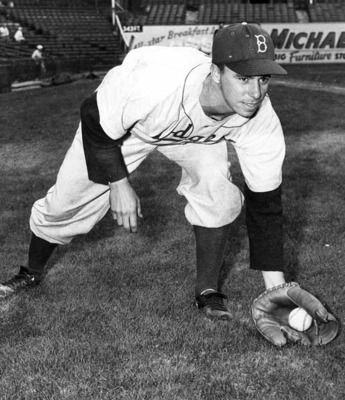

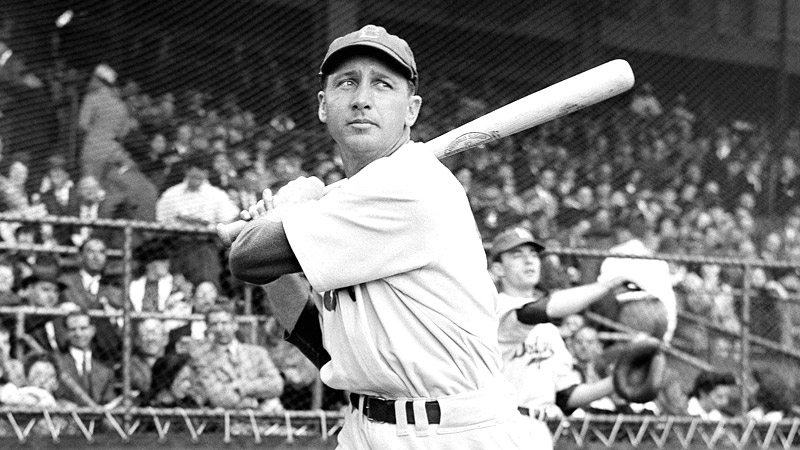
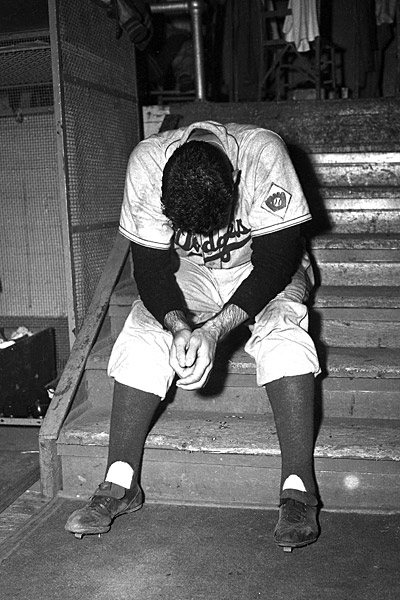
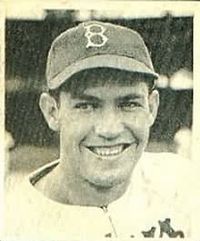
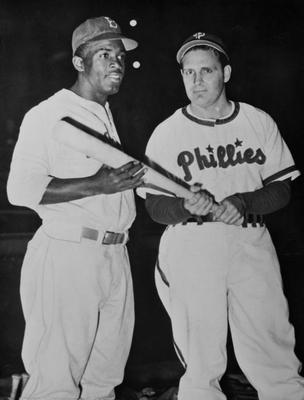

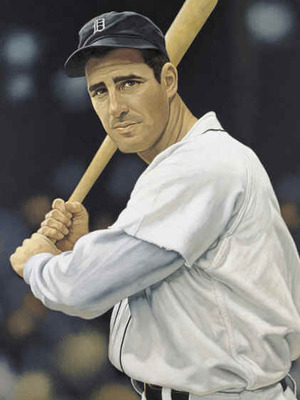

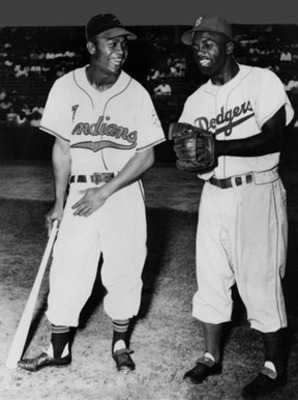
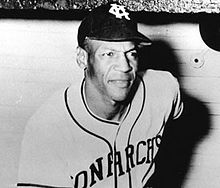
Thanks for the guide. I feel better prepared for what I will see. :)
ReplyDeleteWith your knowledge of the history of baseball I'm curious to hear what you think of the movie after you see it! I hope you do a review too! :)
ReplyDeleteThanks Nerissa. I hope you get to see the movie. It was great. I think you would enjoy it. My review/notes will be posted as next sunday's article.
Delete